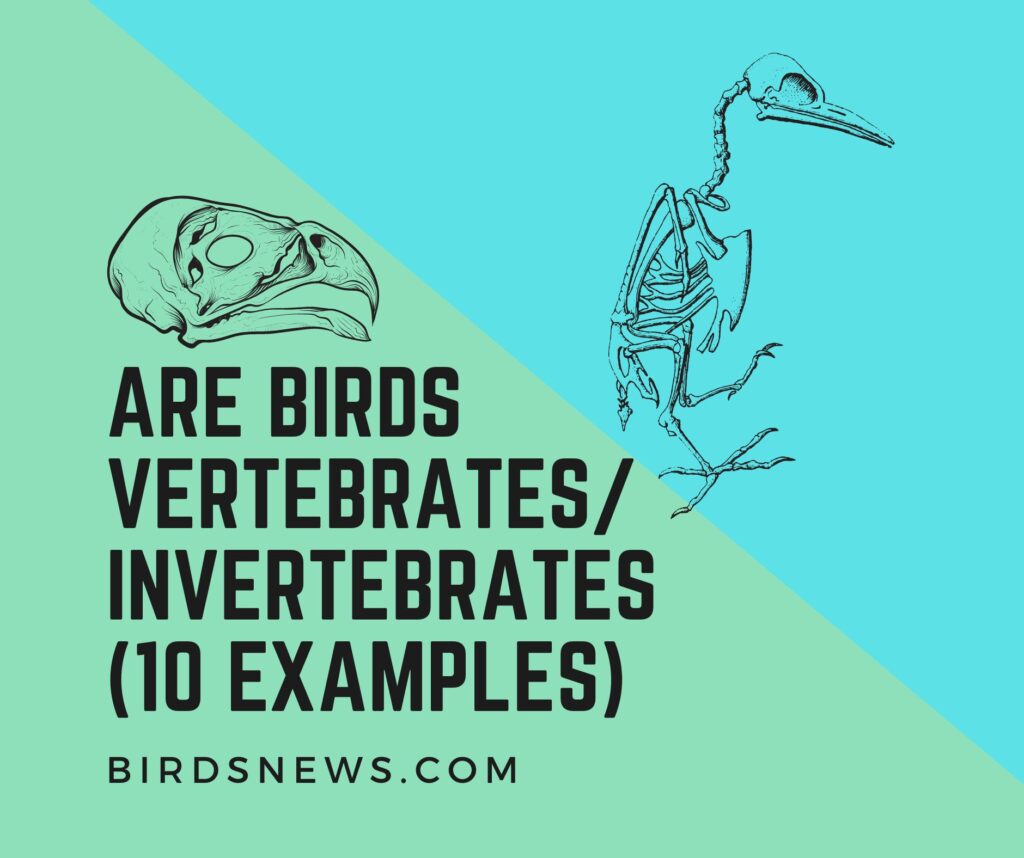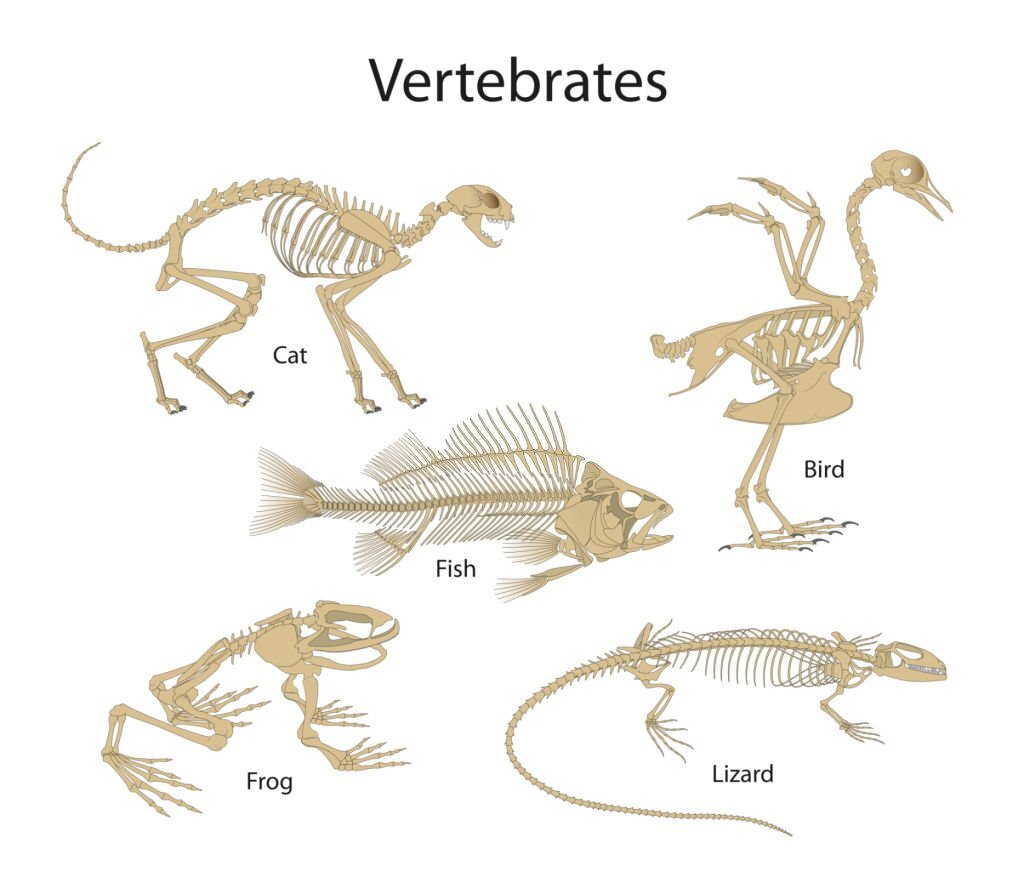Wondering are Birds Vertebrates or Invertebrates? The Animal world is huge, and so is the learning that comes from them. Animals, including birds, aquatic beings, and land livers, All of them are classified into two categories: Vertebrates and Invertebrates. But what category do birds fall in?
Well, Birds are a part of the Vertebrates family, and that is what surprises a lot of individuals. Birds are Vertebrate adapted for flying. They can fly, walk, run, jump, dive and swim in order to navigate from one place to another. From the smallest two-inch-long bee hummingbird to the largest nine-foot-tall ostrich, every bird, despite its flying capabilities, is a vertebrate.

Difference between Vertebrates and Invertebrates
Vertebrates and Invertebrates are two main categories of animals based on the presence or absence of a spinal column or the backbone. The animal kingdom contains ten different phyla, of which only one “Chordata” has animals with spines.
Vertebrate animals also have a muscular system made up of a partially encased central nervous system and several bilaterally paired aggregates. Though despite the name and classification, not all Vertebrates have a vertebral column; some possess a notochord.
On the other hand, Invertebrates are those animals who live without a skeletal system. However, instead of an internal skeleton, most Invertebrates have an external skeleton that is meant for protecting their soft body.
Due to the absence of a skeletal system, Invertebrate animals make it the hard way to grow enormous and therefore lack an intricate body structure. Invertebrates can exist in any part of the earth from the frozen Antarctic, desert land, and even the deepest oceans.
Vertebrates Vs. Invertebrates Comparison Table
| Vertebrates | Invertebrates |
| Animals with an internal skeleton and a backbone/ spinal cord | Animals without an internal skeleton and backbone. |
| Animals without an exoskeleton | Animals with an exoskeleton (External skeleton) |
| They have closed circulatory systems. | A maximum of them possess an open circulatory system. |
| Only 5 % of animal species are vertebrates. | About 95% of animal species are invertebrates. |
| Birds, Mammals, Aquatics, Amphibians, and Reptiles are Vertebrates | Flatworms, arthropods, sponges, and insects are Invertebrates |
| They do not have compound eyes. | A majority of them have compound eyes. |
| They have a complex and highly specialized organ system that is meant for some specific functions. | They have a simple and unorganized nervous system. |

Are Birds Vertebrates? More about it
Birds are Vertebrates with a skeletal structure. However, the skeletal structure of birds though is very different from that of human beings. The bone density of birds is extremely light, with multiple bones packed together to assist them with flying. Birds have increased flexibility in their neck that allows them to turn and see 180 degrees.
The ease of neck flexibility amongst birds allows them to be more attentive and keep the focus on both their prey and predators. However, on the other hand, the human skeletal structure consists of more cartilage and joints, and thus it provides for a wide range of motion and more flexibility throughout different body parts.
Upon holding a bird in your hand, you might confuse about whether this lightweight creature should have bones, let alone a skeleton system. Simultaneously, while you watch an owl twisting its head or a wryneck contorting its body, nothing would be able to assure you that it can have a neck bone.
Birds share a similar skeleton as other Vertebrates along with the same features.
some details about Bird’s Skeletal System
The cervical area of a bird is comparatively longer than several mammals, including humans. A bird’s neck usually has 11 and 25 vertebrae. However, the variation depends on the particular bird species. Higher the vertebrae, the more flexibility it possesses. This flexibility allows birds to move their neck effectively and groom with their beaks, even in hard-to-reach areas.
Besides the neck, the bird’s spinal column has a trunk-like section that contains several fused vertebrae. It leads down into the synsacrum and caudal area near the tail at the base. The bird’s caudal area has 5 to 10 vertebrae. The internal skeleton (bone system) of birds grows within the first few days of birth, causing more physical growth.
Birds have pneumatized bones, which are way too light. What makes their bones lighter is the fact that pneumatized bones are hollow with a series of crisscrossing struts. Lighter the bones, the more flexibility and ease of flight it provides to the birds.
According to the Skeleton system of birds, the vertebrate is an ideal situation for winged life creatures. However, the heavy internal skeleton (despite lighter bones) adds to mobility and stability amongst birds.
10 Examples of Vertebrates and Invertebrates
Here are some of the popularly known Vertebrates and Invertebrates we see in our day-to-day life. Have a look:
- Birds (Vertebrates)
- Cats and Dogs (Vertebrates)
- Octopus (Invertebrates)
- Jellyfish (Invertebrates)
- Amphibians (Vertebrates)
- Snakes (Vertebrates)
- Crabs (Invertebrates)
- Fish (Vertebrates)
- Earthworms (Invertebrates)
- Spiders (Invertebrates)
Some Surprising Facts about Birds
- There are presently over 18,000 bird species in the world.
- Birds are known to be descended from Dinosaurs.
- Birds are the only animals with feathers.
- Birds are present in all countries and continents across the world.
- Several birds can efficiently mimic human voice/ speech. Birds, like parrots, can learn about thousands of words.
- Some birds can sleep even while flying.
- Birds do not have teeth though their metabolic rate is very high.
- Birds play a very important role in balancing the ecosystem.
- Birds weren’t here on earth forever, but they evolved from a group of meat-eating dinosaurs called theropods about a hundred million years ago.
- Birds like crows and ravens are extremely intelligent.
- Birds, like pigeons, can recognize human faces.
- The wingspan of birds like California condors are often mistaken for small aeroplanes.
Vertebrates Vs Invertebrates Presentation For Kids
Wrapping up…
Birds are one of Vertebrates and an evolutionary remnant that can involve in several physical activities. When someone tries learning about birds, there are multiple facts that can blow the mind. A few such facts are mentioned in the article above, and we hope that we have educated you well.

Hi, There and Welcome to BirdsNews.com, is here to help you learn and care about pet birds. and this blog is a journal of everything I’ve learned.
